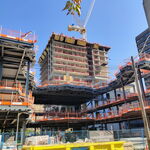dullturtle06
Active Member
Full report here:
I thought the tables were interesting - specifically showing which projects were deferred and which were advanced.
View attachment 442091
View attachment 442092
Interestingly - the 413 apparently scores
i know its more than one lane. but the "just one more lane bro" is in regards to endless money spent on widenings thinking that it will solve congestion. I think ontario should follow the european model of building a highway network, and enhancing mobility and economic opportunity throughout the province. Instead of putting money towards endless widening and creating super highways. Which to be fair is less expensive, but inevitably will lead to inducted demand on an already heavily trafficked corridor. With new highway builds they also create induced demand, but it improves mobility for a new region and relieves adjacent highways/roads. The induced demand is also economic activity. By building new highways you also prevent the widenings of other rural roads and diver traffic.This is pretty insane, thanks for sharing. Yes politics for sure but we as a province did re-elect Douggie to 'get it done', whatever they changed 'it' to.
Based on these numbers if it costs the same to build a brand new freeway from Kitchener to Guelph as it does to add a median to the 401 west of London, it seems like a no-brainier what should be done first. Then again I am not a member of the PC party so...
Highway 413 was a major provincial election issue and the fact that every riding that the highway is planned to run through turned blue tells you something. Sure there are people making a lot of noise, and the feds want to flex some mussle with an enhanced EA, but this what 'the people' want appearently. If it scores that high in the MTO planning before politics muck things up, then it it is at least a project both planners and politicians can get behind I guess.
I know the previous Lib government campaigned hard on building the Highway 7 freeway but haven't heard nearly as much noise since Douggie took over. I guess just saying they're still committed to doing it is enough to win votes in this area- they don't need to build it (just yet anyway).
Just ONE more lane bro? Most of the recent widening projects are adding two or three more lanes each way if you count the HOV lanes.
Just my view. Im pro highway and transit, but against 12 lane super highways




